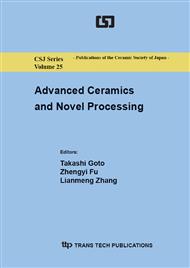p.153
p.157
p.166
p.174
p.178
p.183
p.188
p.194
p.199
Effect of Oxygen Flow Rate on Electrical and Optical Properties of ATO Thin Films Prepared by RF Magnetron Sputtering
Abstract:
Transparent conducting antimony doped tin oxide (ATO) films were sputtered on quartz glass substrates by RF magnetron sputtering at an oxygen flow rate ranging from 0 to 15 sccm. The films were prepared at room temperature and annealed for 15 min in air atmospheres at a temperature of 450 °C. The effect of oxygen flow rate has been investigated by comparing eletrical and optical properties of ATO films. The results suggest that, oxygen flow rate has a great impact on Sb5+/Sb3+ ratio and lattice structure integrity, which finally affects the transmittance and electrical resistivity. With the increase of oxygen flow rate, the grain size is enlarged, which leads to a higher average optical transmittance. On the other hand, with oxygen flow rate increasing, the Sb5+/Sb3+ ratio first increases and then decreases sharply when the oxygen flow rate exceeds 5 sccm. The increase of Sb5+/Sb3+ ratio results in the increase of carrier concentration and finally contributes to a decrease of electrical resistivity. The optimal resistivity is 8.9×10-2 Ω·cm and the average transmittance is about 95% at an oxygen flow rate of 5 sccm.
Info:
Periodical:
Pages:
178-182
Citation:
Online since:
June 2014
Price:
Сopyright:
© 2014 Trans Tech Publications Ltd. All Rights Reserved
Share:
Citation:


